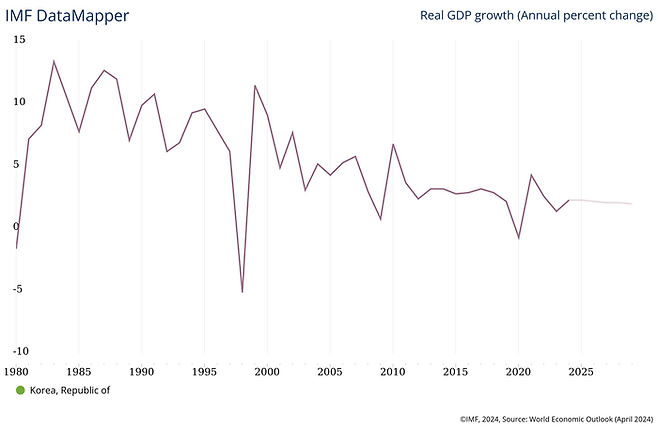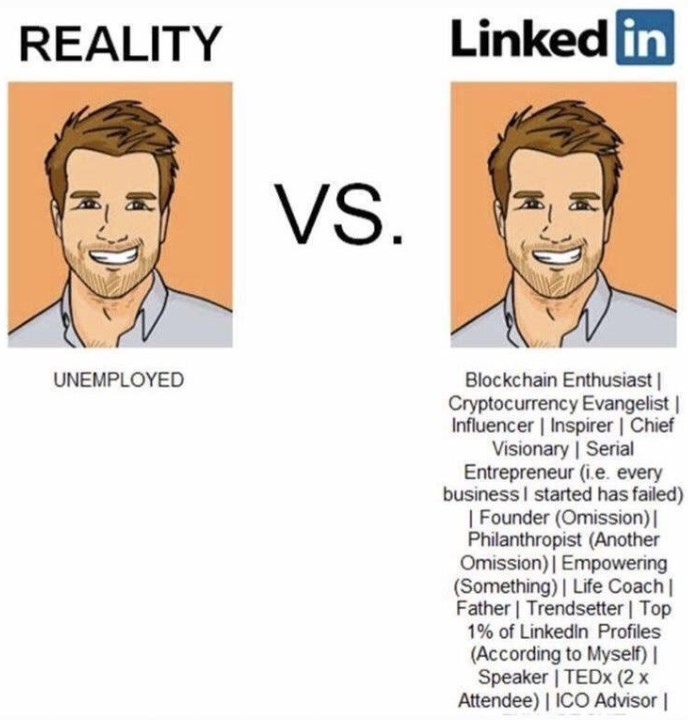Don’t be (extra) afraid of math. It is just a language
Math in AI/Data Science is not really math, but a shortened version of English paragraph.
In science, researchers often ask 'plz speak in plain English', a presentation that math is just to explain science in more scientific way.
I liked math until high school, but it became an abomination during my college days. I had no choice but to make records of math courses on my transcript as it was one of the key factors for PhD admission, but even after years of graduate study and research, I still don’t think I like math. I liked it when it was solving a riddle.
The questions in high school textbooks and exams are mostly about finding out who did what. But the very first math course in college forces you to prove a theorem, like 0+0=0. Wait, 0+0=0? Isn’t it obvious? Why do you need a proof for this? I just didn’t eat any apple, so did my sister. So, nobody ate any apple. Why do you need lines of mathematical proof for this simple concept?
Then, while teaching AI/Data Science, I often claim that math equations in the textbook are just short version of long but plain English. I tell them “Don’t be afraid of math. It is just a language.” Students are usually puzzled, and given a bunch of 0+0=0 like proof in the basic math textbooks for first year college courses, I get to grasp why my students showed no consent to the statement (initially). So, let me illustrate my detailed back-up.

Math is just a language, but only in a certain context
Before I begin arguing math is a language, I would like to make a clear statement that math is not really a language as in academic defintion of language. The structure of math theorem and corollary, for example, is not a replacement of paragraph with a leading statement and supporting examples. There might be some similarity, given that both are used to build logical thinking, but again, I am not comparing math and language in 1-to-1 sense.
I still claim that math is a language, but in a certain context. My topic of study, along with many other closely related disciplines, usually create notes and papers with math jargons. Mathematicians maybe baffled by me claiming that data science relies on math jargons, but almost all STEM majors have stacks of textbooks mostly covered with math equations. The difference between math and non-math STEM majors is that the math equations in non-math textbooks have different meaning. For data science, if you find y=f(a,b,c), it means a, b, and c are the explanatory variables to y by a non-linear regressional form of f. In math, I guess you just read it “y is a function of a, b, and c.”
My data science lecture notes usually are 10-15 pages for a 3-hour-long class. It might look too short for many of you, but in fact I need more time to cover the 15-pager notes. Why? For each page, I condense many key concepts in a few math equations. Just like above statement “a, b, and c are the explanatory variables to y by a non-linear regressional form of f”, I read the equations in ‘plain English’. In addition to that, I give lots of real life examples of the equation so that students can fully understand what it really means. Small variations of the equations also need hours to explain.
Let me bring up one example. Adam, Bailey, and Charlie have worked together to do a group assignment, but it is unsure if they split the job equally. Say, you know exactly how the work was divided. How can you shorten the long paragraph?
y=f(a,b,c) has all that is needed. Depending on how they divided the work, the function f is determined. If y is not a 0~100 scale grade but a 0/1 grade, then the function f has to reflect the transformation. In machine learning (or any similar computational statistics), we require logistic/probit regressions.
In their assignment, I usually skip math equation and give a long story about Adam, Bailey, and Charlie. As an example, Charlie said he’s going to put together Adam’s and Bailey’s research at night, because he’s got a date with his girlfriend in the afternoon. At 11pm, while Charlie was combining Adam’s and Bailey’s works, he found that Bailey almost did nothing. He had to do it by himself until 3am, and re-structured everything until 6am. We all know that Charlie did a lot more work than Bailey. Then, let’s build it in a formal fashion, like we scientists do. How much weight would you give it to b and c, compared to a? How would you change the functional form, if Dana, Charlie’s girlfriend, helped his assignment at night? What if she takes the same class by another teacher and she has already done the same assignment with her classmates?
If one knows all possibilities, y=f(a,b,c) is a simple and short replacement of above 4 paragraphes, or even more variations to come. This is why I call math is just a language. I am just a lazy guy looking for the most efficient way of delivering my message, so I strictly prefer to type y=f(a,b,c) instead of 4 paragraphes.
Math is a univeral language, again only in a certain context
Teaching data science is fun, because it is like my high school math. Instead of constructing boring proof for seemingly an obvious theorem, I try to see hidden structures of data set and re-design model according to the given problem. The diversion from real math is due to the fact that I use math as a tool, not as a mean. For mathematicians, my way of using math might be an insult, but I often say to my students that we do not major math but data science.
Let’s think about medieval European countries when French, German, and Italian were first formed by the process of pidgin and creole. In case you are not familiar with two words, pidgin language is to refer a language spoken by a children by parents without common tongue. Creole language is to refer a common language shared by those children. When parents do not share common tongue, children often learn only part of the two languages and the family creates some sort of a new language for internal communication. This is called pidgin process. If it is shared by a town or a group of towns, and become another language with its own grammar, then it is called creole process.
For data scientists, mathematics is not Latin, but French, German, or Italian, at best. The form is math (like Latin alphabet), but the way we use it is quite different from mathematicians. For major European languages, for some parts, they are almost identical. For data science, computer science, natural science, and even economics, some math forms mean exactly the same. But the way scientists use the math equations in their context is often different from others, just like French is a significant diversion from German (or vice versa).
Well-educated intellectuals in medieval Europe should be able to understand Latin, which must have helped him/her to travel across western Europe without much trouble in communication. At least basic communication would have been possible. STEM students with heavy graduate course training should be able to understand math jargons, which help them to understand other majors’ research, at least partially.
Latin was a universal language in medieval Europe, so as math to many science disciplines.
Math in AI/Data Science is just another language spoken only by data scientists
Having said all that, I hope you can now understand that my math is different from mathematician’s math. Their math is like Latin spoken by ancient Rome. My math is simply Latin alphabet to write French, German, Italian, and/or English. I just borrowed the alphabet system for my own study.
When we have trouble understanding presentations with heavy math, we often ask the presentor, “Hey, can you please lay it out in plain English?”
The concepts in AI/Data Science can be, and should be able to be, written in plain English. But then 4 paragraphes may not be enough to replace y=f(a,b,c). If you need way more than 4 paragraphes, then what’s the more efficient way to deliver your message? This is where you need to create your own language, like creole process. The same process occurs to many other STEM majors. For one, even economics had decades of battle between sociology-based and math-based research methods. In 1980s, sociology line lost the battle, because it was not sharp enough to build the scientific logic. In other words, math jargons were a superior means of communication to 4 paragraphes of plain English in scientific studies of economics. Now one can find sociology style economics only in a few British universities. In other schools, those researchers can find teaching positions in history or sociology major. And, mainstream economists do not see them economists.
The field of AI/Data Science evolves in a similar fashion. For once, people thought software engineers are data scientists in that both jobs require computer programming. I guess now in these days nobody would argue like that. Software engineers are just engineers with programming skills for websites, databases, and hardware monitoring systems. Data Scientists do create computer programs, but it is not about websites or databases. It is about finding hidden patterns in data, building a mathematically robust model with explanatory variables, and predicting user behaviors by model-based pattern analysis.
What’s still funny is that when I speak to another data scientists, I expect them to understand y=f(a,b,c), like “Hey, y is a function of a, b, and c”. I don’t want to lay it out with 4 paragraphes. It’s not me alone that many data scientists are just as lazy as I am, and we want our counterparties to understand the shorter version. It may sound snobbish that we build a wall against non-math speakers (depsite the fact that we also are not math majors), but I think this is an evident example that data scientists use math as a form of (creole) language. We just want the same language to be spoken among us, just like Japanese speaking tourists looking for Japanese speaking guide. English speaking guides have little to no value to them.
Math in AI/Data Science can be, should be, and must be translated to ‘plain English’
A few years ago, I have created an MBA program for AI/Data Science that shares the same math-based courses with senior year BSc AI/Data Science, but does not require hard math/stat knoweldge. I only ask them to borrow the concept from math heavy lecture notes and apply it to real life examples. It is because I wholeheartedly believe that the simple equation still can be translated to 4 paragraphes. Given that we still have to speak to each other in our own tongue, it should be and must be translated to plain language, if to be used in real life.
As an example, in the course, I teach cases of endogeneity, including measurement error, omitted variable bias, and simultaneity. For BSc students, I make them to derive mathematical forms of bias, but for MBA students, I only ask them to follow the logic that what bias is expected for each endogenous case, and what are closely related life examples in business.
An MBA student tries to explain his company’s manufacture line’s random error that slows down automated process by measurement error. The error results in attenuation bias that under-estimates mismeasured variable’s impact in scale. Had the product line manager knew the link between measurement error and attenuation bias, the loss of automation due to that error must have attracted a lot more attention.
Like an above example, some MBA students in fact show way better performance than students in MSc in AI/Data Science, more heavily mathematical track. They think math track is superior, although many of them cannot match math forms to actual AI/Data Science concepts. They fail not because they do not have pre-training in math, but because they just cannot read f(a,b,c) as work allocation model by Adam, Bailey, and Charlie. They are simply too distracted to math forms.
During admission, there are a bunch of stubborn students with a die-hard claim that MSc or death, and absolutely no MBA. They see MBA a sort of blasphamy. But within a few weeks of study, they begin to understand that hard math is not needed unless they want to write cutting edge scientific dissertations. Most students are looking for industry jobs, and the MBA with lots of data scientific intuition was way more than enough.
The teaching medium, again, is ‘plain English’.
With the help of AI translator algorithms, I now can say that the teaching medium is ‘plain language’.









